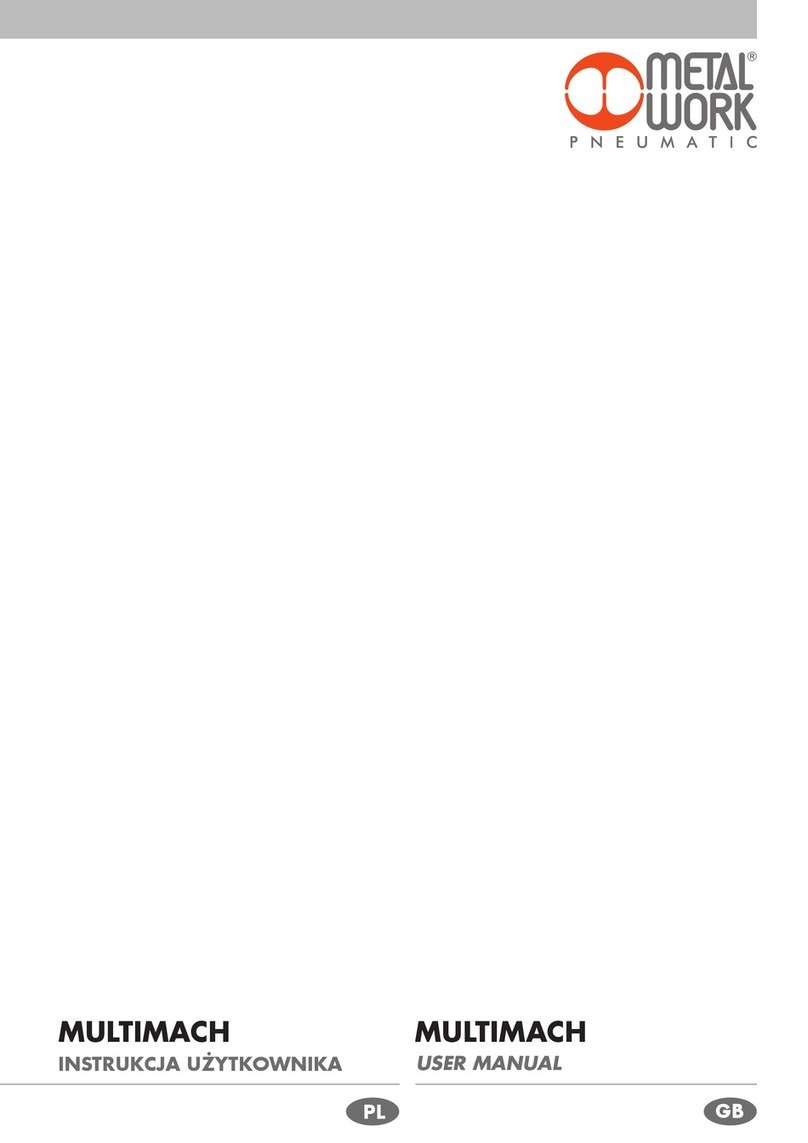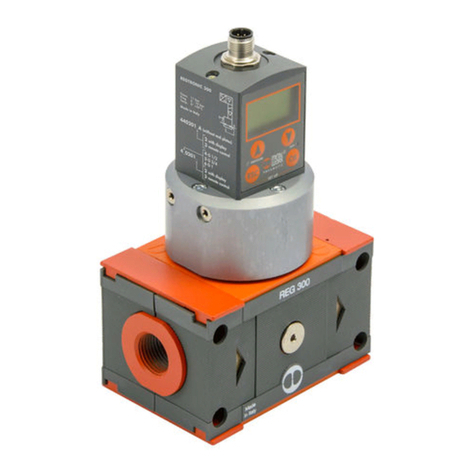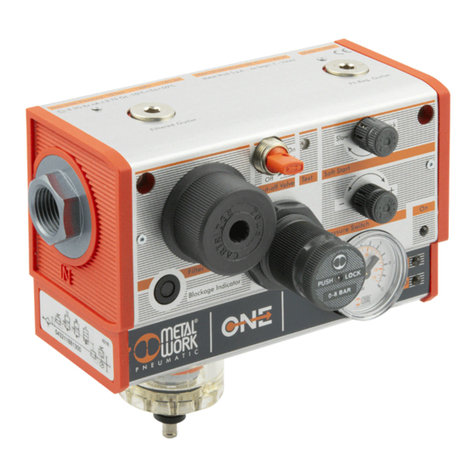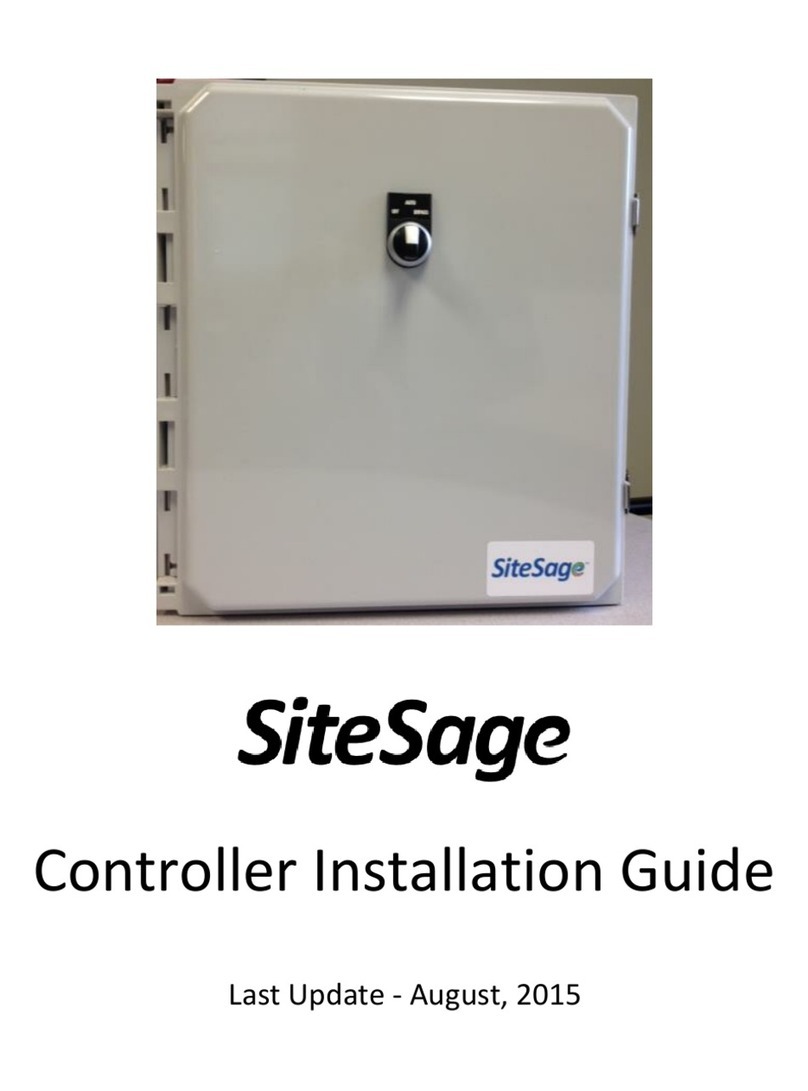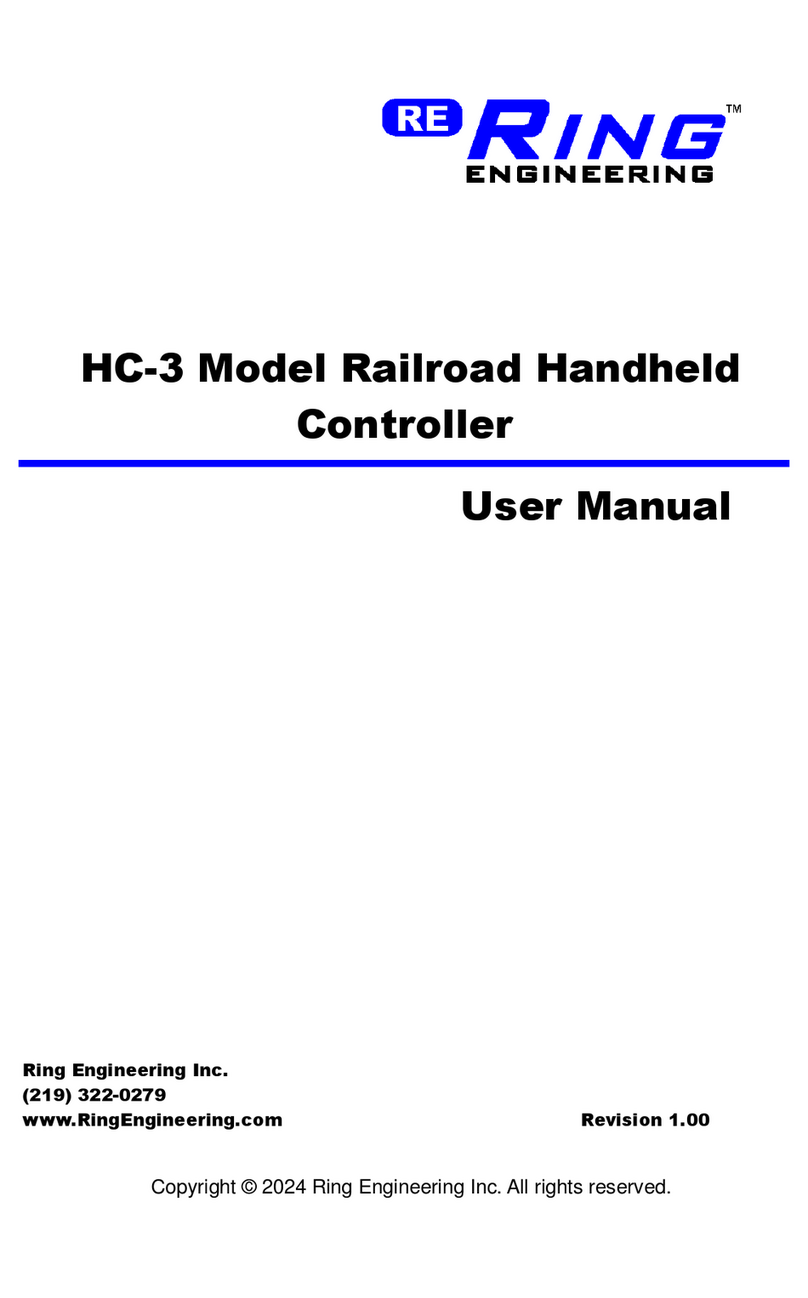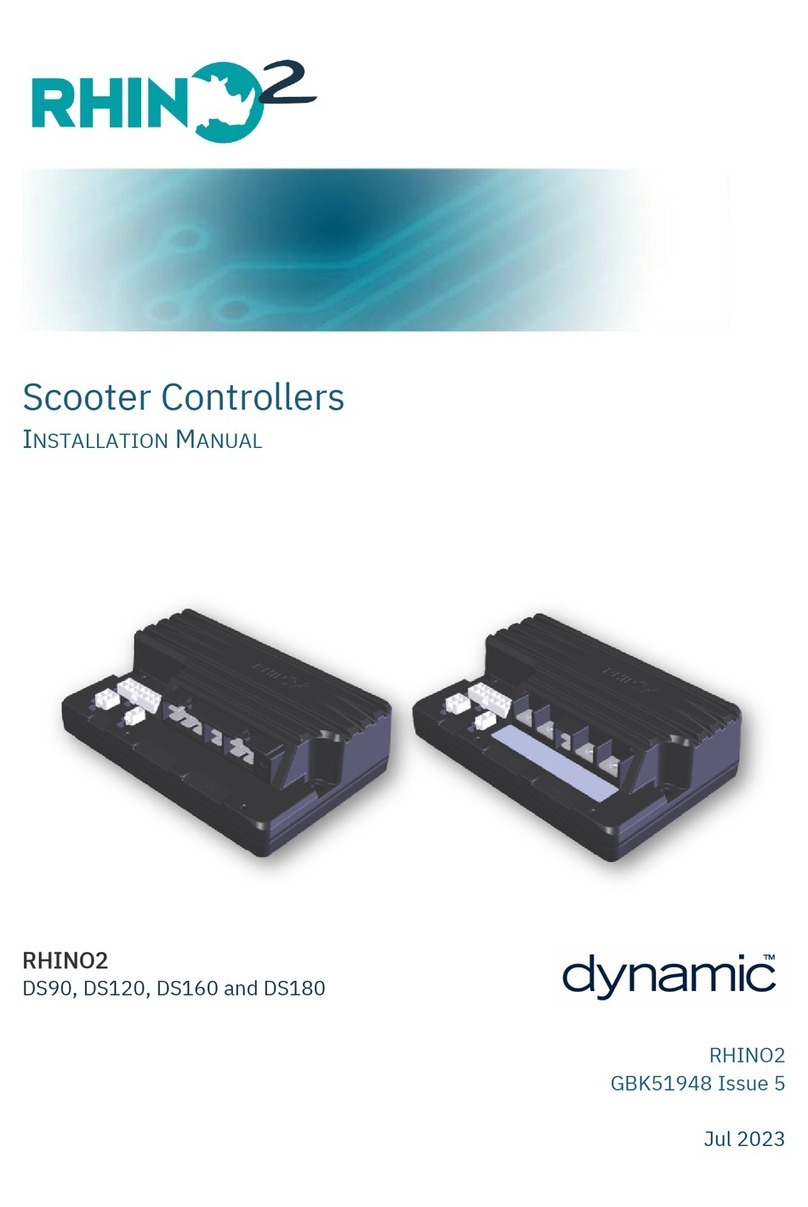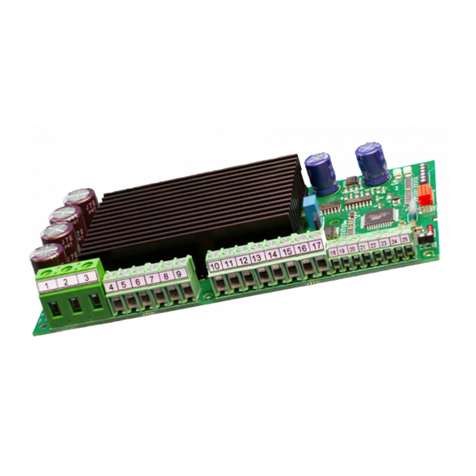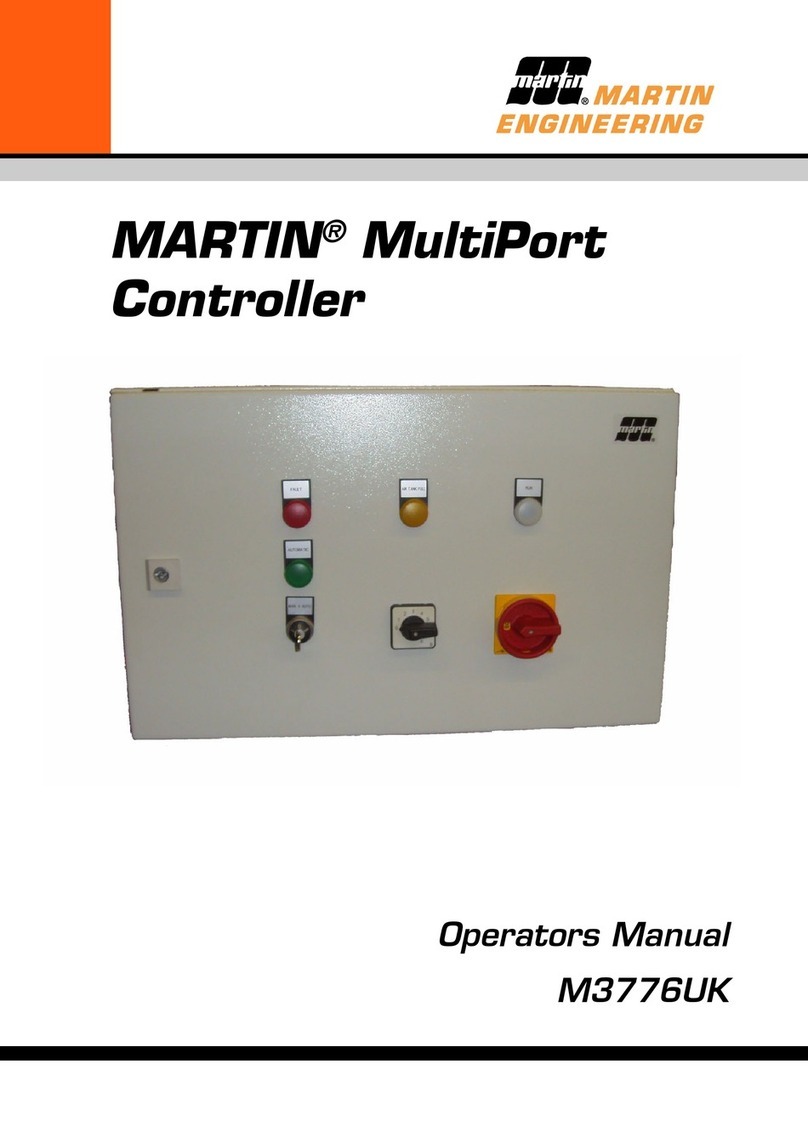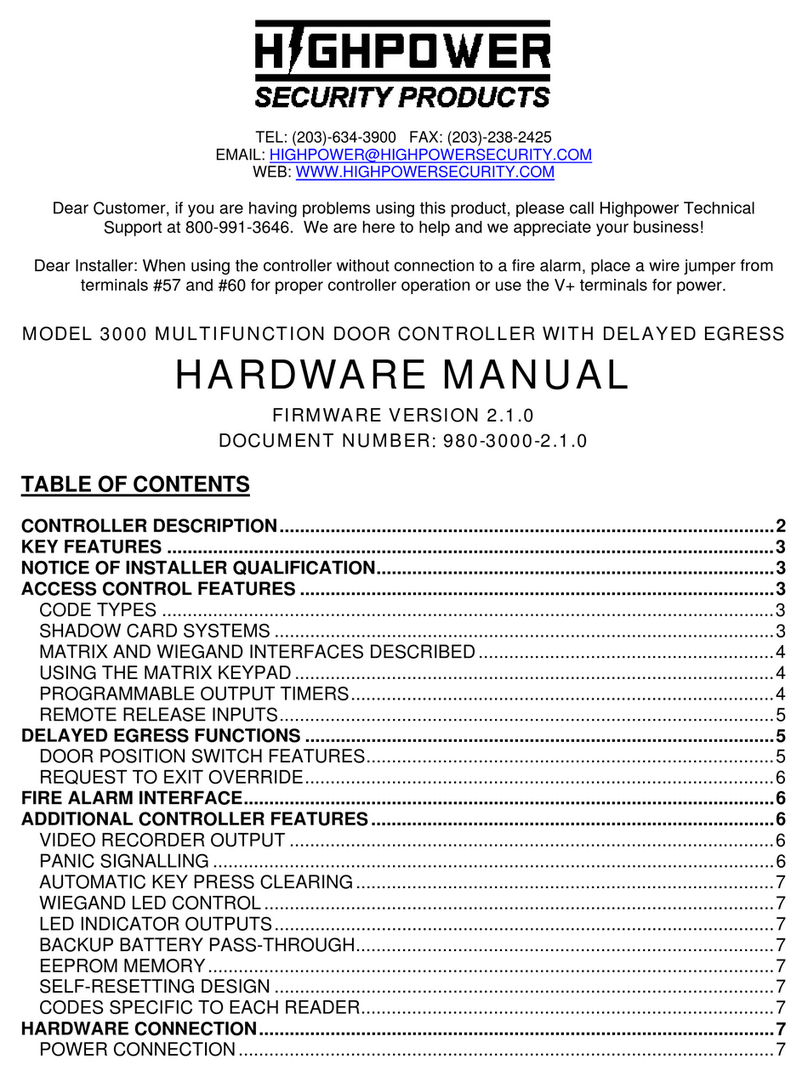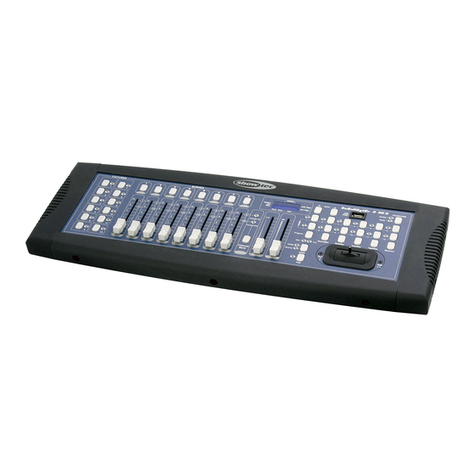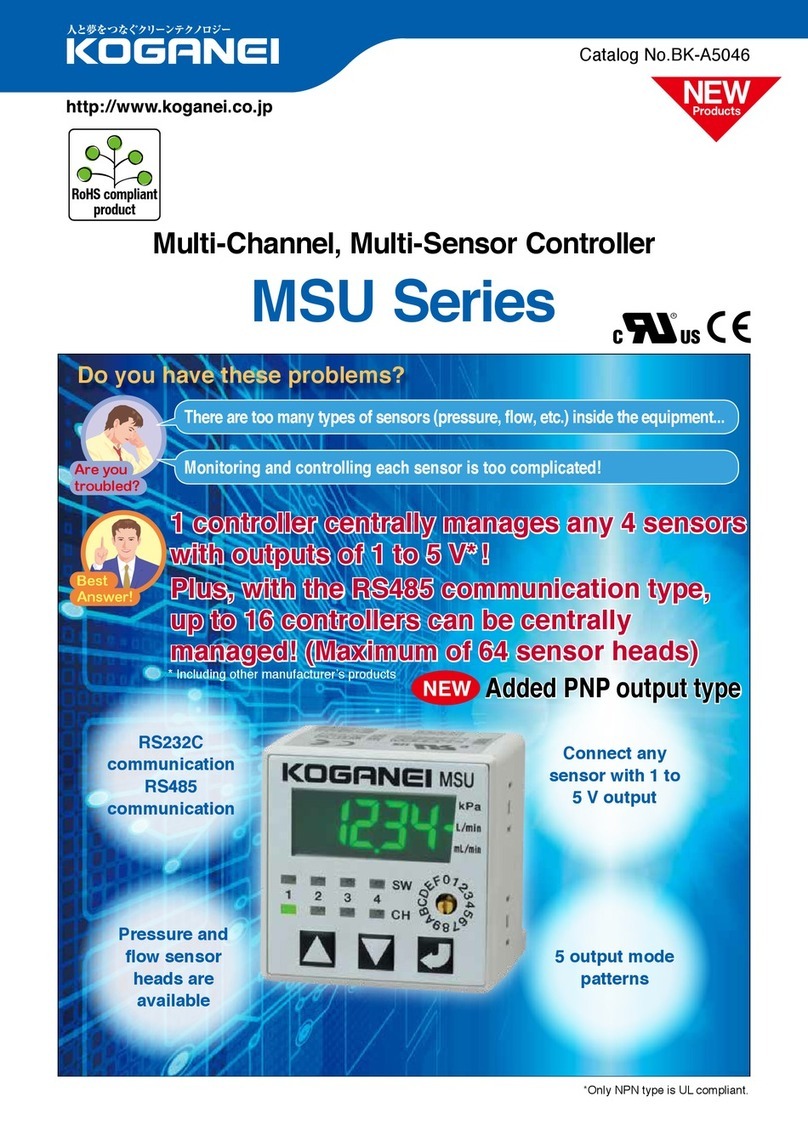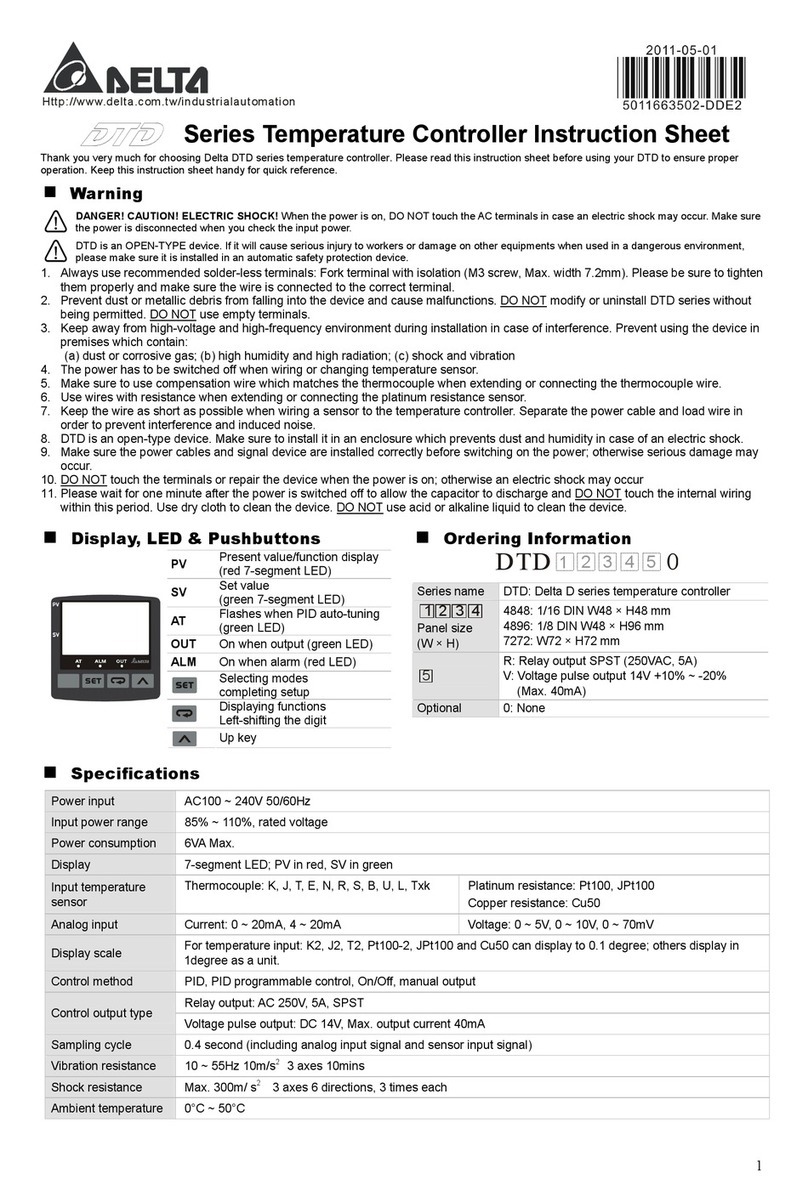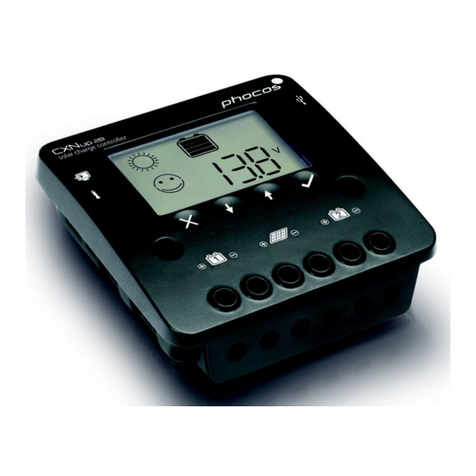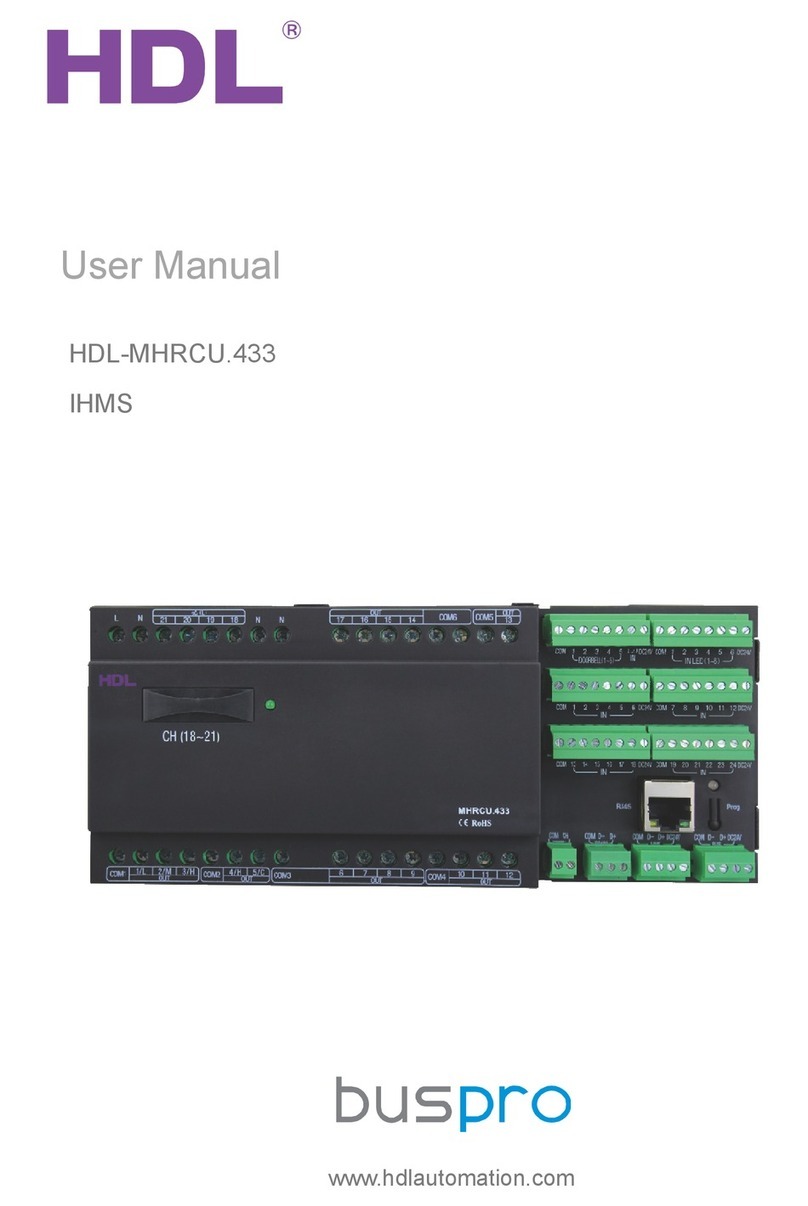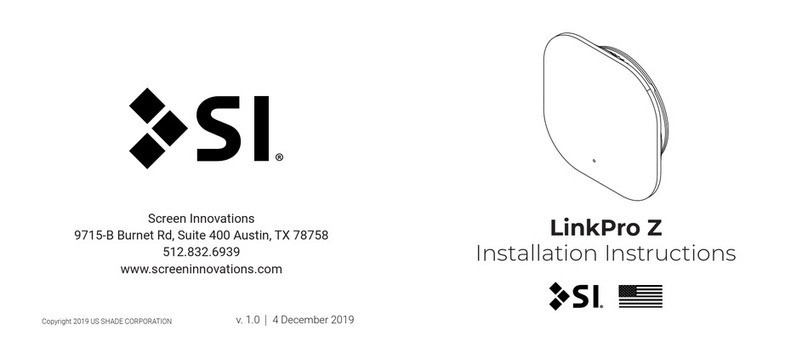Metal Work SHAK 470 User manual

IGB
SHAK 470
USO E MANUTENZIONE
SHAK 470
USE AND MAINTENANCE

2
CARATTERISTICHE TECNICHE SPECIFICATIONS
DATI TECNICI
CON MOTORI PASSO-PASSO
Temperatura ambiente °C -10 ÷ +50
Massima umidità relativa (IP55) 90% a 40°C / 57% a 50°C
(no condensa)
Massimo duty cycle 50%
Massima forza assiale fornibile (con motori Metal Work)
senza freno N 250
con freno N 250
Massima velocità a vuoto
senza freno m/s 2
con freno m/s 2
Massima accelerazione a vuoto m/s250
Massima massa ammessa kg 7.5
CON MOTORI BRUSHLESS
Temperatura ambiente °C 0 ÷ +40
Massima umidità relativa (IP65) °C 90% (no condensa)
Massimo duty cycle 100%
Massima forza assiale fornibile (con motori Metal Work)
senza riduttore N 80
con riduttore N 700
Massima velocità a vuoto
senza riduttore m/s 5
con riduttore m/s 2.7
Massima accelerazione a vuoto m/s250
Massima massa ammessa
senza riduttore kg 3
con riduttore kg 25
N.B.: Per il montaggio verticale è consigliato l’utilizzo di motori con freno di stazionamento che interviene
solo in caso di mancanza di alimentazione elettrica ma non interviene in caso di sovraccarico dei motori.
Per il corretto funzionamento del freno di stazionamento è necessario rispettare i limiti imposti dalle curve
di carico assiale in funzione della velocità (vedere catalogo).
TECHNICAL DATA SHAK 340
WITH STEPPER MOTORS
Ambient temperature °C -10 to +50
Maximum relative humidity (IP55) 90% at 40°C / 57% at 50°C
(no condensate)
Maximum value of duty cycle 50%
Maximum value of axial force available (with Metal Work motors)
without brake N 250
with brake N 250
Maximum speed without load
without brake and without gear unit m/s 2
with brake and without gear unit m/s 2
Maximum acceleration without load m/s250
Maximum admissible mass kg 7.5
WITH BRUSHLESS MOTORS
Ambient temperature °C 0 to +40
Maximum relative humidity (IP65) °C 90% (no condensate)
Maximum value of duty cycle 100%
Maximum value of axial force available (with Metal Work motors)
without gear unit N 80
with gear unit N 700
Maximum speed without load
without gear unit m/s 5
with gear unit m/s 2.7
Maximum acceleration without load m/s250
Maximum admissible mass
without gear unit kg 3
with gear unit kg 25
NB: With vertical installation, it is advisable to use motors with a holding brake that only activates in the
event of a power failure but not when there is a motor overload. For the correct operation of the
brake, it is necessary to meet the limits required by the axial load curves according to the speed (see
the calogue).

3
NB. Quando sul cilindro agiscono contemporaneamente momenti e/o forze rispettare le equazioni sotto indicate, dove Lx, Ly e Lz vanno espresse in metri.
NB. When the cylinder is subjected simultaneously to torque and force, keep to the following equations, where Lx, Ly and Lz have to be given in metres.
Mx = Fz · Ly + Fy · Lz My = Fz · Lx + Fx · Lz Mz = Fy · Lx + Fx · Ly
(Mx
)
Mx max +(My
)
My max +(Mz
)
Mz max +(Fy
)
Fy max +(Fz
)
Fz max ≤1
Fy
Fz
Fy
Fx
Fz
Fx
Mz
Fz
My
Fy
Mx
Fx
SCHEMA FORZE E MOMENTI DIAGRAM OF FORCES AND MOMENTS
Taglia / Size Fy max [N] Fz max [N] Mx max [Nm] My max [Nm] Mz max [Nm]
SHAK 470 1000 800 32 50 70
NB. I valori in tabella sono calcolati per una vita teorica di 10000 km.
NB. The values are calculated on the basis of theoretical useful life of 10000 km.

4
L’asse elettrico va fissato ad una struttura rigida e stabile montando gli
elementi di fissaggio QS su una delle due code di rondine ricavate sul
profilo estruso. Il montaggio va effettuato sincerandosi che il numero di
elementi di fissaggio QS sia sufficiente a garantire la stabilità del sistema
durante le fasi di movimento con tutte le masse applicate. I componenti da
montare sull’asse SHAK vengono fissati alla piastra del carrello utilizzando
elementi di fissaggio K oppure elementi di fissaggio QS.
MONTAGGIO
The electric axis must be secured to a firm rigid structure, by mounting QS
fixing elements on one of the two dovetail joints in the extruded section.
During assembly, make sure there is a sufficient number of QS fixing
elements to guarantee the stability of the system during the movement of
all the applied masses. The components to be mounted on the SHAK axis
are fixed to the plate of the carriage using either the K or the QS fixing
elements.
ASSEMBLY
USO HOW TO USE
Gli assi elettrici della serie SHAK possono essere montati orizzontalmente,
verticalmente o con inclinazioni intermedie.
POSIZIONE DI MONTAGGIO
The electric axes in the SHAK series can be mounted either horizontally,
vertically or at an intermediate angle.
ASSEMBLY POSITION

5
La piastra frontale è montata su un carrello dotato di rotelle che si muovono
su due barre temprate inserite nell’estruso.
Il gioco delle rotelle può essere regolato agendo su due perni eccentrici.
Per la regolazione del gioco, agire come segue:
• se l’asse è orientato verticalmente, posizionare la piastra nella posizione
di finecorsa, lato inferiore;
• se l’asse è montato orizzontalmente, posizionare la piastra nella
posizione di finecorsa, lato motore;
• disinserire l’alimentazione elettrica ed assicurarsi che non venga inserita
durante le operazioni;
• togliere le coperture a scatto a tirandole nella direzione delle frecce;
• spingere la piastra nella zona delle coperture tolte in modo da poter
accedere ai dadi esagonali b;
• allentare di poco i dadi superiori b;
• girare i grani per eccentrico cin senso orario al fine di regolare
le rotelle ed azzarare i giochi;
• serrare i dadi superiori bbloccando nel contempo i grani con una
chiave esagonale in modo da non modificarne la posizione c;
• terminata la regolazione, rimontare le copertura.
REGOLAZIONE DEL GIOCO DEL CARRELLO
The front plate is mounted on a carriage with wheels moving along two
hardened and tempered bars that are inserted into the extruded section.
The wheel clearance can be adjusted by operating the two eccentric pins.
Proceed as follows to adjust it:
• if the axis is mounted vertically, place the plate in the end stroke position,
bottom side;
• if the axis is mounted horizontally, place the plate in the end stroke
position, motor side;
• switch off the power supply and make sure it is not switched on during
this intervention;
• remove the snap-fit covers a pulling them in the direction of the arrows;
• push the plate to the area where the covers have been removed to
access hex nuts b;
• slightly loosen the top nuts b;
• rotate the grub screws for the eccentric cam cclockwise to adjust the
wheels and eliminate any clearance;
• tighten the top nuts bby simultaneously locking the grub screws, using a
hex wrench, taking care not to modify the position c;
• then remount the cover.
HOW TO ADJUST CARRIAGE WHEEL CLEARANCE
a
a
bc

6
SOSTITUZIONE DELLA CINGHIA DENTATA HOW TO REPLACE THE TOOTHED BELT
La cinghia dentata è un elemento soggetto ad usura quindi va tenuta
controllata e, quando necessario, va sostituita.
Per la sostituzione, agire come segue:
• se l’asse è orientato verticalmente, posizionare la piastra nella posizione
di finecorsa, lato inferiore;
• se l’asse è montato orizzontalmente, posizionare la piastra nella
posizione di finecorsa, lato motore;
• disinserire l’alimentazione elettrica ed assicurarsi che non venga inserita
durante le operazioni;
• togliere le coperture a scatto atirandole nella direzione delle frecce;
• spingere la piastra nella zona delle coperture tolte;
• allentare le viti be i grani c;
• fissare saldamente la nuova cinghia dentata a quella vecchia con nastro
adesivo in modo da poterla inserire congiuntamente allo smontaggio di
quella vecchia;
• posizionare le estremità della nuova cinghia nei serraggi d e e e
bloccarla tirando a fondo le viti f;
• tendere leggermente la cinghia agendo sulle viti di regolazione be
rimontare le coperture a scatto;
• eseguire la “regolazione della tensione della cinghia” (vedi procedura).
The toothed belt is a component part undergoing normal wear, therefore it
needs to be regularly checked and replaced, if necessary.
Proceed as follows to replace it:
• if the axis is mounted vertically, place the plate in the end stroke position,
bottom side;
• if the axis is mounted horizontally, place the plate in the end stroke
position, motor side;
• switch off the power supply and make sure it is not switched on during
this intervention;
• remove the snap-fit covers apulling them in the direction of the arrows;
• push the plate to the area where the covers have been removed;
• loosen the screws bgrub screws c;
• firmly secure the new toothed belt to the old one using an adhesive tape
so that it can inserted jointly as the old one is removed;
• insert the end of the new belt into the clamps d and e and lock it in
position by tightening the screws ffully;
• slightly tension the belt by operating the adjusting screws band
remount the snap-fit covers;
• then adjust the belt tension (see procedure).
a
a
e
b
c
f
d

7
REGOLAZIONE DELLA TENSIONE DELLA CINGHIA HOW TO ADJUST THE BELT TENSION
Il carrello dell’asse elettrico viene movimentato mediante una cinghia
dentata che, a seguito dell’utilizzo, può allentarsi nel tempo.
L’asse SHAK permette la regolazione della tensione della cinghia in modo
da ripristinare un valore idoneo.
Per la regolazione del tensionamento della cinghia dentata agire come
segue:
• se l’asse è orientato verticalmente, posizionare la piastra nella posizione
di finecorsa, lato inferiore;
• se l’asse è montato orizzontalmente, posizionare la piastra nella
posizione di finecorsa, lato motore;
• disinserire l’alimentazione elettrica ed assicurarsi che non venga inserita
durante le operazioni;
• svitare i grani b;
• regolare la tensione della cinghia secondo la tabella sotto riportata
agendo sulle viti a destra e a sinistra adella piastra; i valori di
tensionamento sono per valori di carico e accelerazione medi: in caso
di applicazioni con dinamiche elevate è possibile aumentarli; l’aumento
del tensionamento accorcia la durata della cinghia;
• bloccare le viti di regolazione avvitando i grani b;
• verificare la tensione della cinghia secondo la tabella sotto riportata.
The carriage of the electric axis is driven by a toothed belt, which is subject
to wear during operation and may become slack over time.
The SHAK axis allows the belt tension to be adjusted and resume the correct
value.
Proceed as follows to adjust the tension of the toothed belt:
• if the axis is mounted vertically, place the plate in the end stroke position,
bottom side;
• if the axis is mounted horizontally, place the plate in the end stroke
position, motor side;
• switch off the power supply and make sure it is not switched on during
this intervention;
• loosen the grub screws b;
• adjust the belt tension according tgo the table below, by turning the
right and left screws aof the plate; the pulling force is expressed as
average load and acceleration values: in applications characterized
by high dynamic forces, these values can be increased; the increase in
tension shortens the belt lifecycle;
• lock the adjusting screws by turning the grub screws b;
• check the belt tension according to the table below.
WARNING
The pulling force shown in the table refers to maximum values. If the belt
is tensioned with a HIGHER PULLING FORCE, this causes EARLY WEAR of
the belt and an INCREASE IN NOISE LEVEL.
ATTENZIONE
Le tensioni riportate nella tabella sono valori massimi. Se la cinghia viene
tesa con una TENSIONE SUPERIORE, questo provoca L’USURA PRECOCE
della cinghia e L’AUMENTO DELLA RUMOROSITÀ.
Tipo/Type Forza di tensionamento [N]/ Pulling force [N] Forza d’inflessione F [N]/ Deflection force F [N] Freccia d’inflessione x [mm]/ Deflection arrow x [mm]
SHAK 470-800 430 12.5 4.6
SHAK 470-1200 430 8.3 4.6
SHAK 470-1600 430 11 7.7
SHAK 470-2000 430 8.6 7.7
SHAK 470-2400 430 7.2 7.7
X
=
=
F
a
b

8
Per la regolazione del sensore induttivo agire come segue:
• se l’asse è orientato verticalmente, posizionare la piastra nella posizione
di finecorsa, lato inferiore;
• se l’asse è montato orizzontalmente, posizionare la piastra nella
posizione di finecorsa, lato motore;
• disinserire l’alimentazione elettrica ed assicurarsi che non venga inserita
durante le operazioni;
• il collegamento del sensore induttivo avviene secondo il seguente schema;
• spostare la piastra in posizione di finecorsa;
• spingere il sensore induttivo fino in battuta sulla piastra;
• ritrarre il sensore induttivo di circa 1÷2 mm;
• dopo il cablaggio, controllare il funzionamento del sensore induttivo
muovendo manualmente la piastra.
COLLEGAMENTO ELETTRICO DEL SENSORE INDUTTIVO ELECTRICAL INDUCTIVE SENSOR CONNECTION (INDUCTIVE SENSOR)
• How to adjust the inductive sensor:
• if the axis is mounted vertically, place the plate in the end stroke position,
bottom side;
• if the axis is mounted horizontally, place the plate in the end stroke
position, motor side;
• switch off the power supply and make sure it is not switched on during
this intervention;
• the inductive sensor must be connected according to the following
diagram;
• move the plate to the stroke-end position;
• push the inductive sensor fully against the plate;
• retract the inductive sensor by about 1-2 mm;
• upon completion of the connection, move the plate by hand to check
operation of the inductive sensor.
DC
NPN
brown
blue
black +
A
0V
Z
DC
PNP
brown
blue
black +
A
0V
Z
ALLACCIAMENTO ELETTRICO DEI SENSORI INDUTTIVI
ELECTRICAL CONNECTION OF INDUCTIVE SENSORS
Il carrello si muove su rotelle che rotolano su barre temprate.
Affinchè la movimentazione sia regolare e gli organi durino a lungo
senza grippaggi consigliamo di effettuare una lubrificazione degli organi
meccanici ogni 800 ore di esercizio utilizzando esclusivamente olio Kluber
“Paraliq P460” codice 9910490.
Per la lubrificazione del carrello agire come segue:
• se l’asse è orientato verticalmente, posizionare la piastra nella posizione
di finecorsa, lato inferiore;
• se l’asse è montato orizzontalmente, posizionare la piastra nella
posizione di finecorsa, lato motore;
• disinserire l’alimentazione elettrica ed assicurarsi che non venga inserita
durante le operazioni;
• togliere le coperture a scatto atirandole nella direzione delle frecce;
• spingere la piastra nella zona delle coperture tolte in modo da poter
accedere ai quattro nippli di lubrificazione b;
• terminata la lubrificazione, rimontare le coperture.
LUBRIFICAZIONE DEL CARRELLO CARRIAGE LUBRICATION
The carriage moves on wheels that run on hardened and tempered bars.
For the moving parts to operate smoothly and ensure seizure-free long
lifecycle, lubrication of all the mechanical parts is recommended every 800
hours of operation, using Kluber Paraliq P460 oil, code 9910490.
Proceed as follows to lubricate the carriage:
• if the axis is mounted vertically, place the plate in the end stroke position,
bottom side;
• if the axis is mounted horizontally, place the plate in the end stroke
position, motor side; ;
• switch off the power supply and make sure it is not switched on during
this intervention;
• remove the snap-fit covers a, pulling them in the direction of the arrows;
• push the plate in the area where the covers have been removed so as
to access the four lubrication nipples b;
• then remount the covers.
b
a
a

9
Gli alberi e le rotelle sono elementi soggetti ad usura quindi vanno tenuti
controllati e, quando necessario, vanno sostituiti. Si consiglia di sostituire
sempre unitamente sia gli alberi che le rotelle. I passi da seguire per la
sostituzione degli alberi e delle rotelle sono i seguenti:
1. sbloccaggio tensione cinghia;
2. estrazione carrello;
3. smontaggio alberi e cuscinetti;
4. riassemblaggio alberi e cuscinetti;
5. inserimento carrello;
6. riassemblaggio testata;
7. tensionamento cinghia.
1. SBLOCCAGGIO TENSIONE CINGHIA
• disinserire l’alimentazione elettrica ed assicurarsi che non venga inserita
durante le operazioni;
• togliere le coperture a scatto atirandole nella direzione delle frecce;
• spingere la piastra nella zona delle coperture tolte;
• allentare i grani ce svitare le viti bfino a liberare la cinghia da
entrambi i lati della piastra;
• togliere la cinghia dal morsetto allentando le viti f. Questa operazione
va eseguita solo per il morsetto dal lato opposto al motore.
SOSTITUZIONE ALBERI E ROTELLE HOW TO REPLACE THE SHAFT AND THE WHELLS
The shafts and the bearings are component parts subject to heavy wear,
therefore they need to be regularly checked and replaced, if necessary.
It is advisable to always replace both the shaft and the bearings together.
Proceed as follows to replace them:
1. belt tension release;
2. slide extraction;
3. disassemble the shafts and the bearings;
4. riassemble shafts and bearings;
5. insert the slide;
6. riassemble the head;
7. belt tensioning.
1. BELT TENSION RELEASE
• switch off the power supply and make sure it is not switched on during
the intervention;
• remove the snap-fit covers apulling them in the direction of the arrows;
• push the plate to the area where the covers have been removed;
• loosen grab screws c, unscrew the screw band realease the belt on
both sides of the plate;
• remove the belt from the clamps loosen the screws f. This operation is
only for the clamps on the opposite side of the motor.
a
a
b
c
f

10
3. SMONTAGGIO ALBERI E CUSCINETTI
• mantenendo bloccato l’albero u
27 tramite una chiave a brugola, svitare il
dado
u
26 utilizzando una chiave fissa;
• in questo modo è possibile accedere al cuscinetto u
29 ed all’albero u
27.
L’operazione descritta al punto precedente va ripetuta per tutti e quattro
gli alberi e cuscinetti.
2. ESTRAZIONE CARRELLO
• svitare le n°2 viti re togliere il carter s;
• svitare le n°4 viti te sfilare il blocco testata u
21;
• far scorrere il carrello u
22 verso il lato della testata appena smontata.
Estrarre il carrello dal profilo u
23 facendolo scorrere fin oltre le barre
temprate.
• svitare le n°4 viti u
24 e togliere la piastra u
25 dal carrello.
3. DISASSEMBLE THE SHAFTS AND THE BEARINGS
• keep the shaft blocked u
27 with an Allen wrench, unscrew the nut u
26
using a universal wrench;
• in this way it is possible to access the bearing u
29 and the shaft u
27.
The operation described in the previous point must be repeated for all
four shafts and bearings.
2. SLIDE EXTRACTION
• unscrew the screws rand remove the cover s;
• unscrew the screws tand pull out the head block u
21;
• move the slide u
22 down the side of the head just removed. Pull out the
slide from the body u
23 sliding it over the hardened guide.
• unscrew the four screws u
24 and remove the plate u
25 from the slide.
21
u
t
s
r
u
23
u
22
u
24
u
25
u
26
u
27
u
29

11
4. RIASSEMBLE SHAFTS AND BEARINGS
• place the shaft u
27 in its seat making sure that both the thickness u
28 and
the bearing u
29 fit in the shaft. Then tighten the nut u
26 following the same
sequence in reverse order.
This operation must be repeated for all four shafts and bearings.
N.B. The nuts of the concentric shafts must be fully tightened in this
phase, the nuts of the eccentric shafts only need to be pointed and
tightened later during the adjustment clearance.
• remount the plate u
25 on the slide by tightening the screws u
24 fully.
4. RIASSEMBLAGGIO ALBERI E CUSCINETTI
• montare l’albero u
27 nella sede facendo attenzione che sia lo spessore
u
28 che il cuscinetto u
29 si calzino sull’albero. Serrare quindi il dado u
26
eseguendo l’operazione inversa del punto precedente.
L’operazione va ripetuta per tutti e quattro gli alberi e cuscinetti.
N.B. I dadi degli alberi concentrici vanno tirati a fondo già in questa
fase, i dadi degli alberi eccentrici vanno solo puntati e tirati
successivamente in fase di regolazione giochi.
• rimontare la piastra u
25 sul carrello tirando a fondo le viti u
24.
5. INSERIMENTO CARRELLO
• porre attenzione al lato di inserimento del carrello u
22 nell’estruso u
23;
• il carrello deve essere rimontato in modo tale che lo spessore u
30,
che si trova su uno dei lati del carrello, si trovi in corrispondenza del
sensore
u
31 dopo il montaggio.
5. INSERT THE SLIDE
• pay attention to the side where the slide u
22 is insert into the body u
23;
• the slide must be remounted in such a way that the thickness u
30, located
on one side of the slide, is in the same side of the slide u
31 after assembly.
u
26
u
27
u
29
u
28
u
25
u
24
u
23
u
22
u
31
u
30

12
7. TENSIONAMENTO CINGHIA
• reinserire la cinghia nel morsetto smontato in precedenza avendo cura
che la cinghia sia centrata rispetto all’asse del morsetto. Serrare a fondo
le n°2 viti f;
• avvitare le n°2 viti bsu entrambi i lati della piastra;
• eseguire la “regolazione della tensione della cinghia” (vedi procedura);
• rimontare le coperture.
6. RIASSEMBLAGGIO TESTATA
• inserire la cinghia u
32 nella testata facendola scorrere sull’esterno della
puleggia;
• riassemblare la testata u
21 fissandola con le n°4 viti t;
• posizionare il carter ssulla testata appena montata e fissarlo con le n°2
viti
r.
7. BELT TENSIONING
• insert the belt in the clamps, pay attention to center the belt in the
clamps. Tighten the screws f fully;
• reassembly the clamps by fixing them with the two screws bon both
sides of the plate;
• then adjust the belt tension (see the “how to adjust carriage wheel
clearance“ procedure);
• remount the snap-fit covers.
6. RIASSEMBLE THE HEAD
• insert the belt u
32 into the head by turning it on the outside of the pulley;
• reassembly the head u
21 by fixing it with the four screws t;
• put the cover son the head just removed and fix it with the two
screws
r.
b
f
u
32
21
u
t
s
r

13
L’asse elettrico SHAK viene fornito senza catena portacavi che può essere
acquistata come accessorio.
Tale catena serve a guidare cavi elettrici e tubazioni durante le
movimentazioni della piastra anteriore.
Per il montaggio della catena portacavi agire come segue:
• se l’asse è orientato verticalmente, posizionare la piastra nella posizione
di finecorsa, lato inferiore;
• se l’asse è montato orizzontalmente, posizionare la piastra nella
posizione di finecorsa, lato motore;
• disinserire l’alimentazione elettrica ed assicurarsi che non venga inserita
durante le operazioni;
• togliere la copertura a scatto a tirandola nella direzione della freccia;
• fissare la flangia m della catena portacavi alla piastra anteriore
utilizzando le due viti n in dotazione e le due spine già presenti sulla
piastra anteriore;
• fissare il terminatore della catena portacavi al corpo superiore
dell’estruso utilizzando le apposite viti
o
, facendo attenzione a non
danneggiare il sensore induttivo;
• rimontare la copertura a scatto a.
MONTAGGIO DELLA CATENA PORTA CAVI HOW TO ASSEMBLE THE CABLE CHAIN
The SHAK electric axis is supplied without cable chain, which can be
bought as an accessory.
This chain is used to guide the power cables and pipes during the
movement of the front plate.
Proceed as follows to mount the cable chain:
• if the axis is mounted vertically, place the plate in the end stroke position,
bottom side;
• if the axis is mounted horizontally, place the plate in the end stroke
position, motor side;
• switch off the power supply and make sure it is not switched on during
this intervention;
• remove the snap-fit cover apulling it in the direction of the arrow;
• secure the flange m of the cable chain to the front plate, using the two
screws n provided and the two pins already mounted on the front plate;
• secure the end section of the cable chain to the upper part of the
extruded body, using the screws
o
, taking care not to damage the
inductive sensor;
• remount the snap-fit cover a.
m
n
o
a

14 www.metalwork.eu
ZSHVAF001 - IM02_02/2019
p
q
Le versioni dotate di motore (o motoriduttore) vengono fornite con lo
stesso già montato e non vi è necessità di eseguire ulteriori regolazioni
meccaniche. In caso di revisione o sostituzione del motore (o motoriduttore)
agire come segue:
• se l’asse è orientato verticalmente, posizionare la piastra nella posizione
di finecorsa, lato inferiore;
• se l’asse è montato orizzontalmente, posizionare la piastra nella
posizione di finecorsa, lato motore;
• disinserire l’alimentazione elettrica ed assicurarsi che non venga inserita
durante le operazioni;
• smontare il tappo p per accedere al grano di fissaggio del giunto
sull’albero;
• allentare il grano sottostante per il fissaggio del giunto sull’albero;
• svitare le 4 viti q di fissaggio della campana;
• smontare il gruppo motore (o motoriduttore);
• per il montaggio ripetere le operazioni in ordine inverso avendo cura
di serrare il giunto sull’albero-motore con una coppia pari a 10 Nm.
Verificare che lo spacco del mozzo e quello del giunto siano allineati.
Per il collegamento di motore ed azionamento, prego riferirsi alla
documentazione specifica.
SOSTITUZIONE DEL MOTORE (O MOTORIDUTTORE) HOW TO REPLACE THE MOTOR (OR GEARMOTOR)
The versions with a motor (or geamotor) are supplied with the motor
ready mounted and there is no need to make any mechanical adjustments.
Proceed as follows in the event of overhaul or replacement of the motor (or
gearmotor):
• if the axis is mounted vertically, place the plate in the end stroke position,
bottom side;
• if the axis is mounted horizontally, place the plate in the end stroke
position, motor side;
• switch off the power supply and make sure it is not switched on during
this intervention;
• remove the plug p to access the grub screw securing the joint to the
shaft;
• loosen the grub screw underneath to secure the joint to the shaft;
• unscrew the four screws q securing the hood;
• remove the motor (or gearmotor) unit;
• reassemble everything following the same sequence in reverse order,
taking care to tighten the joint to the motor shaft to a torque of 10 Nm.
Make sure that the slit in the hub and that in the joint aligned.
Refer to the specific document provided for motor and drive connection.
Il motore va controllato in modo che non vi siano bruschi cambi di velocità.
t
t
V
V
The motor must be controlled to avoid any abrupt changes of speed.
Table of contents
Other Metal Work Controllers manuals
Popular Controllers manuals by other brands

Fluke
Fluke 2200 user guide

FGH
FGH 2000 Series Communications manual
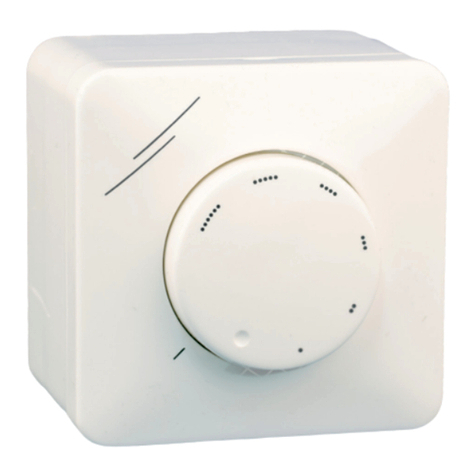
Sentera Controls
Sentera Controls MTY-0-05-AT Mounting and operating instructions
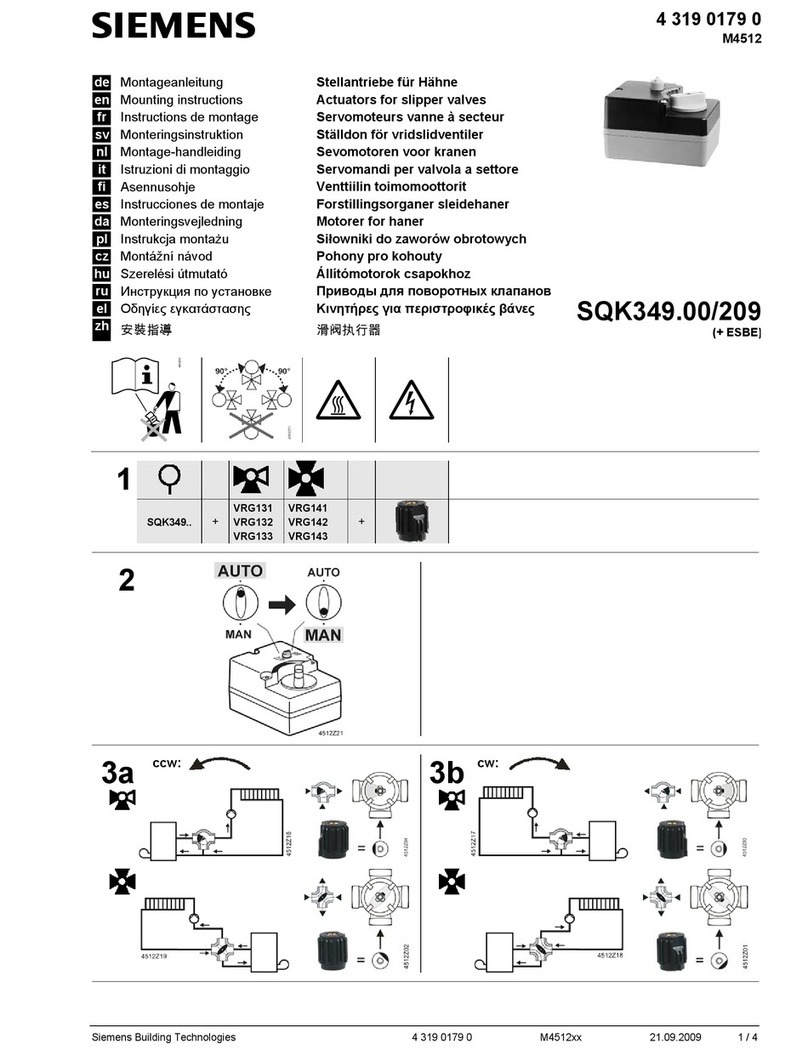
Siemens
Siemens SQK349.00/209 Mounting instructions
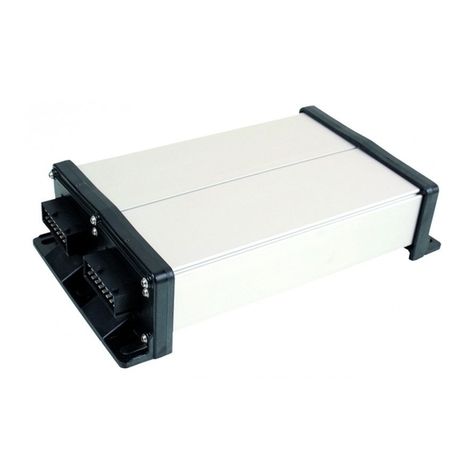
Muller Elektronik
Muller Elektronik SPRAYER-Controller Orchard/Vineyard MIDI 3.0 operating instructions
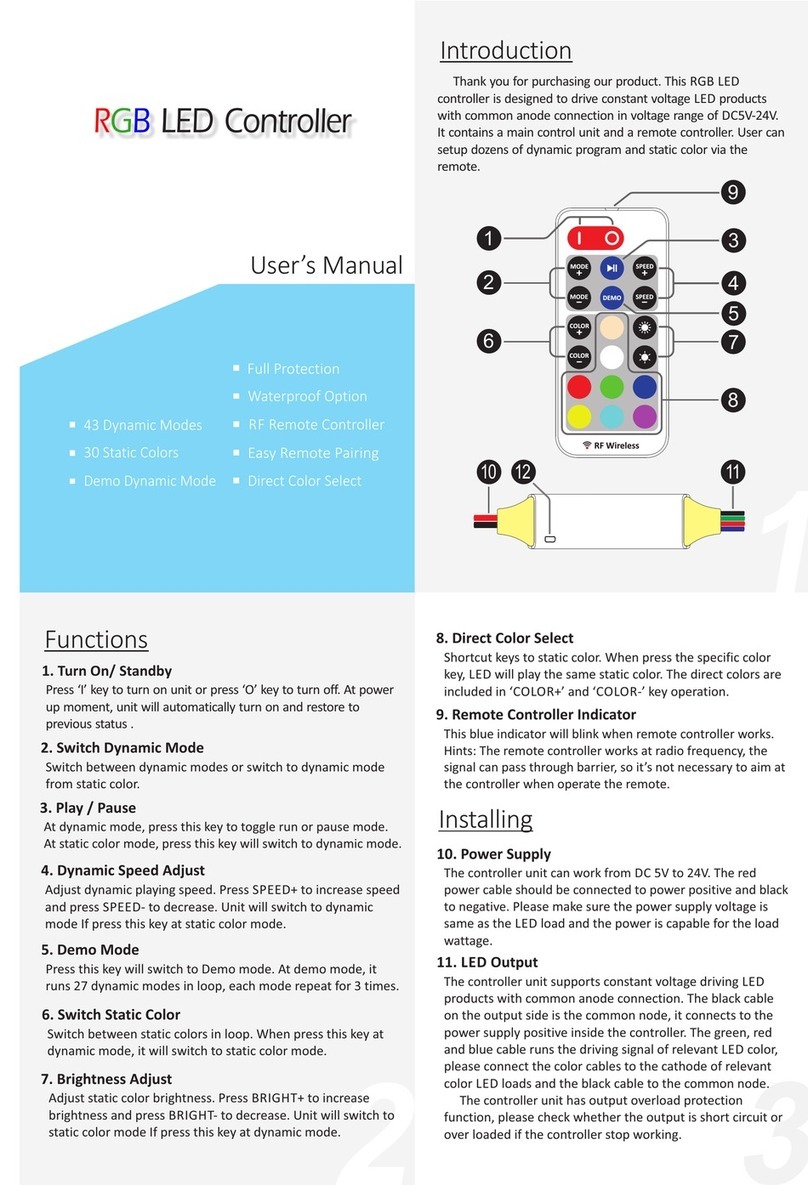
LED Technologies, Inc.
LED Technologies, Inc. R208 user manual
